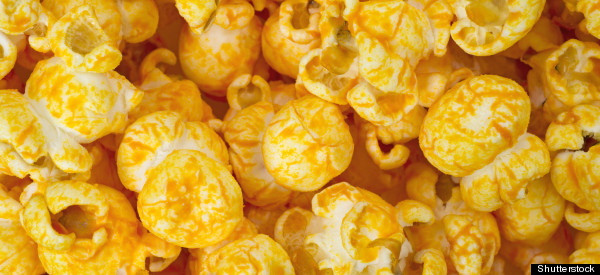Artificial Butter Flavouring Linked To Alzheimer's Disease Risk
The Huffington Post UK
Posted: 03/08/2012 12:01 Updated: 03/08/2012 12:38 | By
Kyrsty Hazell
A buttery food flavouring ingredient found in microwave popcorn could intensify the damaging effects of abnormal brain proteins linked to Alzheimer’s, a recent study has suggested.
Diacetyl (DA), an artificial food flavouring that gives popcorn and margarine its distinctive butter taste, encourages beta-amyloid proteins in the brain to ‘clump’ together, according to findings published in the
Chemical Research in Toxicology journal.
This damaging ‘clumping’ process is a hallmark for Alzheimer’s disease.
Artificial butter flavouring linked to Alzheimer's
Researchers from the
American Chemical Society also warned that DA could easily penetrate the so-called ‘blood-brain barrier’, which prevents harmful substances from entering the brain.
Furthermore, the artificial flavouring also stopped a protective protein called Glyoxalase I reaching the brain – a key protein that safeguards nerve cells.
"In light of the chronic exposure of industry workers to DA, this study raises the troubling possibility of long-term neurological toxicity mediated by DA," researchers said in a statement, reports
Science Daily.
However, researchers added that the study focused on factory workers who worked at microwave popcorn and food-flavouring factories, and were therefore more exposed to the chemical.
What is Diacetyl?Diacetyl is a natural byproduct of fermentation.The DA chemical also forms naturally in fermented beverages such as beer, and gives some chardonnay wines a buttery taste. Diacetyl, at low level, gives beer or wine a slippery feel. At higher levels one can taste a butterscotch flavour.






